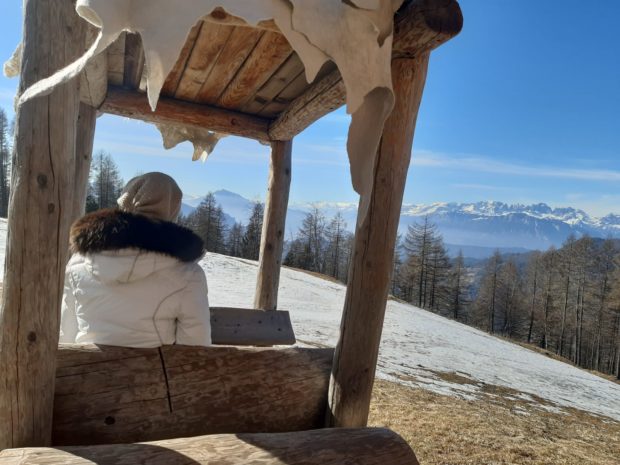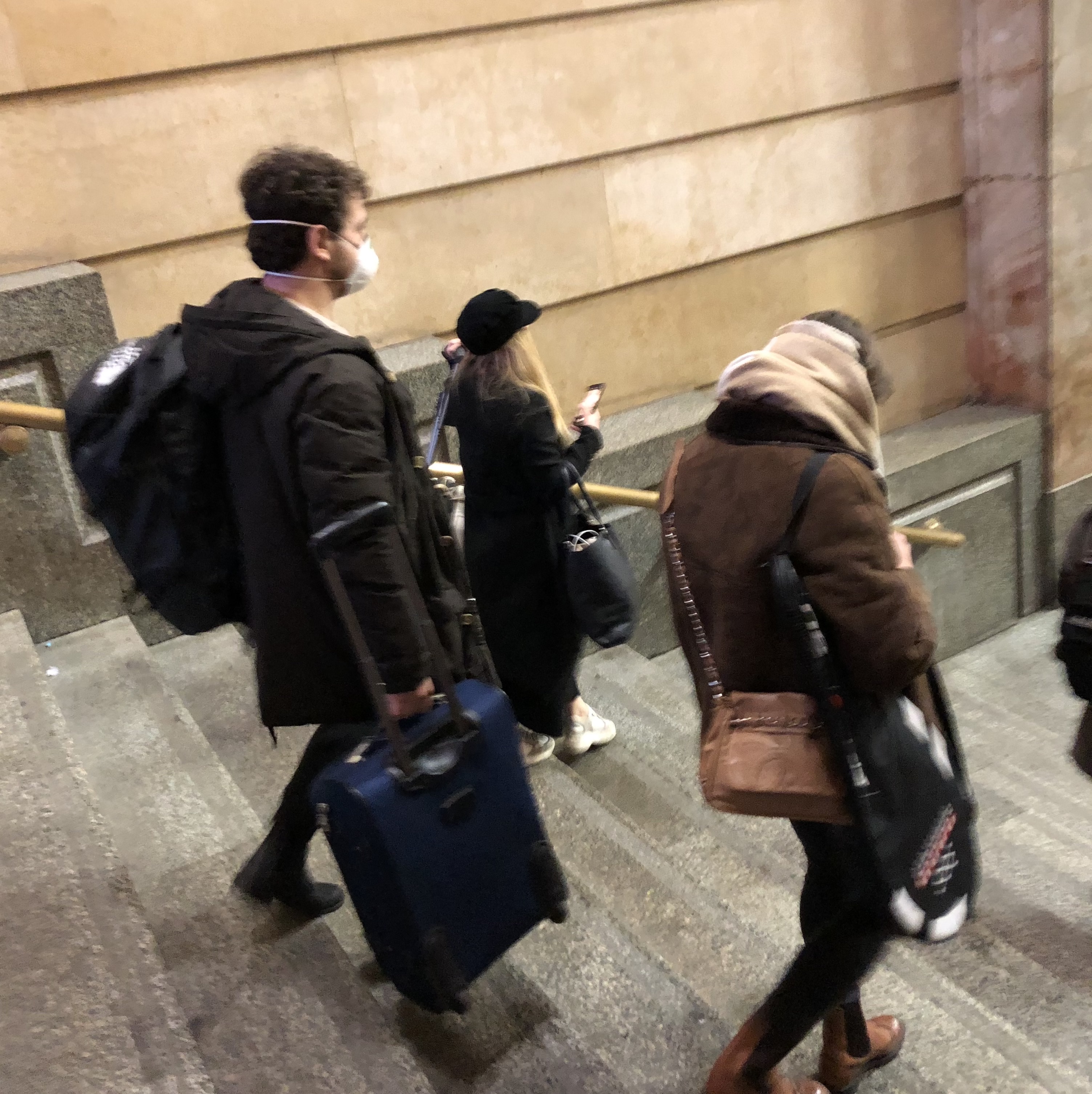
Coronavirus: These days, it’s all Italians are talking about. Since the first two outbreaks occurred in Lombardy and in Veneto, regions in the Northern part of Italy, media and social networks have been examining the emergency minute by minute. Until a few days ago, the not so rare episodes of psychosis were exclusively targeted at unfortunate citizens of Asian origin—it is estimated that Chinese restaurants have lately recorded a drop in turnover of around 70%. But in the last few hours, the inhabitants of Lombardy and Veneto, ruled by the anti-migrant League party, aren’t having a great time either. Ironically enough, the mayors of six municipalities on the island of Ischia have issued a disembarkation ban for tourists from the two northern regions. Who would have thought that, sooner or later, the ports would have been shut for us Lombards, too?
Yes, you read right: I was born in Milan, raised in a small city in the area of Monza, and on the day of the Coronavirus outbreak in Italy, I was about to spend an (almost) carefree weekend in Trentino Alto-Adige, a region till then “immune” from the epidemic. I got on the train aware that the first two cases of COVID-19 had been recorded about 60 km away from my hometown. Just a few hours later, the number of infected people had passed the dozen. In the evening, the news reported that two trains were blocked in the stations of Milan and Lecce for suspicious cases (which later turned out to be false alarms). The next morning, the headlines were all devoted to the first two confirmed victims: A 76-year-old woman residing in Lombardy and a 78-year-old originally from Vo ‘Euganeo (Padua). On Sunday evening, the victims became three, on Monday morning that figure turned into four.


As I’m writing these lines, more than 200 people – 165 just in Lombardy – were found to be COVID-19-positive, and Italy has become the country with the world’s third-highest number of people infected. The government has issued an emergency decree to limit the contagion within the areas of outbreaks, where people are forbidden to enter and exit. The Ministry of Health has shared its precautionary guidelines. In Lombardy, even outside the “red” area, “events or initiatives of any kind and any form of meetings” have been suspended, schools of all types and levels have been closed for a week and the working hours of bars and night clubs have been substantially limited. Various employers have encouraged their employees to work from home. Supermarkets were stormed: In Lissone, not far from Milan, a hypermarket had to close half an hour earlier as stocks were exhausted. In pharmacies, finding face masks or disinfectant solutions is almost impossible. But even in the mountain huts and in the small bars overlooking the Dolomites you couldn’t escape the feeling that something was wrong: Schools were closed even in Trentino, and in many places of the region, cultural and ludic events and Catholic masses were suspended. The iconic Venice Carnival suffered the same fate.

In other words, it wasn’t too peaceful in the mountains either. I myself must have spread some concern due to my unmistakable Lombardy accent: As I was preparing to go to the station to take the return train, my elevator companions were unable to hide a certain uneasiness in finding out where I was going. Only a couple of hours later, we heard of the very first cases registered in Trentino: According to the local newspaper “L’Adige,” a three-member family from Lombardy on holiday was found to be positive for the virus and immediately transferred to Milan by ambulance.
Throughout the weekend, WhatsApp groups were invaded by voice messages, forwarded from contact to contact, until the identity of the sender had ended up lost in the text chain. At best, the senders, who described themselves as physicians, were informing the users of the risks and the best practices to prevent the infection. At worst, they were adding fuel to the fire. One of those messages, heard by myself, falsely reported 29 cases of Coronavirus in Rome, which would have been culpably hidden by the institutions. Over the last few days, part of the web community has been obsessively committed to relaunching every single update, drawing up almost apocalyptic scenarios; another part, instead, has been trying to lighten the mood by sharing jokes and memes, and by rationally pointing out that the common flu season is more deadly than the new Coronavirus.

In the meantime, the experts consulted by newspapers and TVs are closely monitoring the situation. According to the prominent Italian virologist Ilaria Capua, “we are witnessing the spread of a flu-like syndrome caused by Coronavirus. And if we started to call it that way, people would already be calm.” In her opinion, “the more the number of infected people grows—or rather, the more we keep discovering previously unnoticed cases—the better it is. Because it means that the number of infected people is bigger than we thought. And the lethal potential of the virus is much lower”. However, the main problem is that “these viruses travel on their own. And they are unpredictable,” pointed out Massimo Galli, the head of the Sacco Hospital in Milan, a center of excellence for infectious diseases. On the other hand, Maria Rita Gismondo, director of the Sacco laboratory in Milan, believes that media and institutions have been excessively alarmist: “It seems madness to me. We have mistaken an infection just more serious than influenza for a lethal pandemic”, she blew off on Facebook. That analysis was rejected by another Italian virologist, Roberto Burioni, who days before had blamed the “reassuring declamations of some politicians.” Some are even beginning to point the finger at the government’s management during the early hours. According to Professor Walter Ricciardi, member of the WHO Executive Council, “We are paying for the fact that we did not immediately quarantine people who were landing from China. We closed the flights, a decision that has no scientific basis, and this did not allow us to trace the arrivals.”

It goes without saying: When public health is at stake, threatened by a possible pandemic, the boundary between timely information and alarmism, concern and panic winds its way on conspicuously slippery ground. On Facebook, several Italians abroad, primarily in the United States, have underlined with some surprise that the local media machine is giving very little space to the topic and that the issue is being dealt with a far cooler head compared to Italy. But as the Italian legendary writer, Alessandro Manzoni wrote in his prophetic History of the Column of Infamy, “it is less bad to be agitated in doubt than to rest in error”. And even the director of the World Health Organization in Europe, Hans Kluge, expressed his concern for the Italian situation: “What is worrying,” he explained, “is the fact that not all the recorded cases seem to have a clear epidemiological history, that is, a link with trips to China or contacts with other confirmed cases.”
What is certain is that the new Coronavirus will sow a lot of damage, even from an economic point of view. Lombardy and Veneto alone are worth 31% of the country’s GDP, and the abrupt cessation of many companies’ activities within the quarantined areas could cause incalculable damage to the already fragile Italian economy. For my part, I’m trying to get used to the unusual spectrality around me: Empty streets, silence, a few passers-by barricaded behind masks or scarves. Trains and public transportation are almost deserted even in Milan, which until yesterday, during Fashion Week, had hosted visitors from all over the world. Today, however, that eccentric swarm of life in the Lombardy capital looks like just a distant memory.








